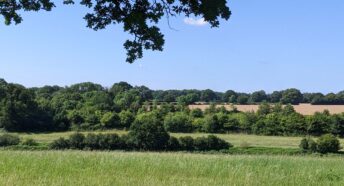Response to roads announcement
CPRE Kent response to roads announcement
CPRE Kent has welcomed elements of the roads investment – worth £1.4billion across the South East – announced by the Government.
The A21 dualling between Tonbridge and Pembury is a model of how road building should be done – with sensitivity to the Area of Outstanding Natural Beauty. The designers listened to campaigners from CPRE Kent and the scheme will include good non-motorised local access running closely parallel separated from the dual carriageway with properly designed crossing points.
The improvements to Junction 5 of the M2 (A249) will hopefully relieve pressure for a new junction, 5a, which CPRE Kent believes would cause unnecessary harm to the countryside and cannot be justified by sole use by the Kent Science Park at Sittingbourne.
CPRE Kent has argued since 205 for the introduction of high speed tolls at the Dartford crossing – this has finally happened but we want the Government to wait to see the full effect of the tolls in improving traffic flow before committing to building any further crossings at Dartford or east of Gravesend which would not only damage the countryside but also increase traffic.
The new junction 10a of the M20 to support development to the south east of Ashford will hopefully reduce development pressure in rural centres of Ashford borough.
However CPRE Kent warns that road building can create traffic and damage countryside. It makes the point that past experience has shown that more roads lead to increased traffic which in turn leads to more congestion.
“We have to be realistic,” said Hilary Newport, Director of CPRE Kent. “There is a pressure for road building but we will always campaign to ensure that where considered necessary it is done in the right way, such as with the A21 widening. We hope the automated tolls will be given a chance to work before any decision on a new Thames crossing is made as we believe they may well make the damage to our countryside of building a new crossing unnecessary.
“Also, these proposals do very little for those people who can’t or choose not to travel by car. We believe there should be a greater focus on sustainable
- A number of important documents have yet to emerge. For example, a rigorous transport plan and a finalised air-quality assessment. The latter is critical given that allocations at Teynham will feed extra traffic into AQMAs.
- There seems to be no coherent plan for infrastructure delivery – a key component of the plan given the allocations being proposed near the already crowded Junction 7.
- There seems to have been little or no cooperation with neighbouring boroughs or even parish councils within Swale itself.
The removal of a second consultation might have been understandable if this final version of the plan were similar to that being talked about at the beginning of the consultation process. It is, however, radically different in the following ways:
- There has been a major shift in the balance of housing allocations, away from the west of the borough over to the east, especially around the historic town of Faversham. This is a move that raises many concerns.
- A new large allocation, with accompanying A2 bypass, has appeared around Teynham and Lynsted, to which we are objecting.
- Housing allocations in the AONB around Neames Forstal that were judged “unsuitable” by the council’s own officers have now appeared as part of the housing numbers.
- Most of the housing allocations being proposed are on greenfield sites, many of them on Grade 1 agricultural land – a point to which we are strongly objecting.
Concerns about the rush to submit the plan
The haste with which the plan is being prepared is especially worrying given the concentration of housing in Faversham. If the town is to take a large amount of new housing, it is imperative that the policies concerning the area are carefully worked out to preserve, as far as possible, the unique nature of the town. The rush to submit the plan is likely to prove detrimental.
As Swale does not have a five-year land housing supply, it is open to speculative development proposals, many of which would run counter to the ideas contained in the current plan. Some are already appearing. This is a common situation, and one that, doubtless, is a reason behind Swale’s haste.
Our overriding fear, however, is that this emphasis on haste is ultimately going to prove counterproductive. This is because it is our view that the plan, in its current form, is unlikely to pass independent examination. We are urging Swale to listen to and act upon the comments being made about the plan and to return the plan to the council with appropriate modifications before submitting it to the Secretary of State.
Essentially, this means treating the current consultation not as the final one but as the ‘lost’ second consultation.
The consultation ends on Friday 30 April and we strongly urge residents to make their opinions known if they have not already done so.
Further information








